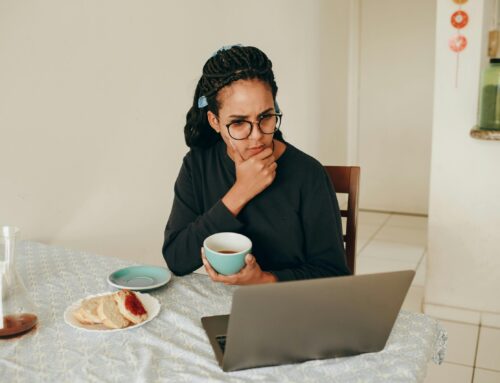We all had a feeling that homeschooling was going to mushroom during the COVID-19 pandemic. Now, we have some hard statistics from the U.S. Census Bureau showing just how dramatic that growth has been.
Overall, the numbers show a jump in U.S. homeschool households from 5.4% in spring of 2020 to 11.1% by the fall. That’s nearly a doubling of homeschoolers over the span of just a few months.
Mind you, these are legitimate homeschool families—not just those who send their kids to public or private schools but who were overseeing remote instruction during this time.
Census researchers Casey Eggleston and Jason Fields summed up the growth nicely: “It’s clear that in an unprecedented environment, families are seeking solutions that will reliably meet their health and safety needs, their child care needs and the learning and socio-emotional needs of their children.”
State-by-state growth in homeschooling
Homeschooling grew in 48 out of 50 states, but some states saw huge gains while others remained relatively flat. Here are the top states that saw the largest increases as a percentage:
- #1: Alaska: 9.6% to 27.5%
- #2: Florida: 5.0% to 18.1%
- #3 Vermont: 4.1% to 16.9%
- #4: Oklahoma: 7.7% to 20.1%
- #5: Mississippi: 3.4% to 15.0%
- #6: West Virginia: 5.4% to 16.6%
- #7: Nevada: 2.5% to 13.1%
- #8: Massachusetts: 1.5% to 12.1%
- #9: Montana: 8.2% to 18.3%
- #10: New York: 1.2% to 10.1%
And here are the five states that either declined or had minimal growth as a percentage:
- #1: Kentucky: 7.7% to 6.5%
- #2: Iowa: 6.6% to 6.0%
- #3: California: 8.6% to 8.7%
- #4: Delaware: 8.9% to 9.1%
- #5: Virginia: 7.9% to 9.4%
If your state isn’t on the list, check out the full breakdown by the Census Bureau here.
Takeaways: 5 ways homeschooling will change due to COVID-19
Like a lot of things in our lives, the global pandemic will change the face of homeschooling for the foreseeable future. Here are five ways.
1. Homeschooling will become more diverse
Home education began as the outgrowth of faith-driven families who wanted to protect their children from harmful cultural influences in the public schools, combined with a strong desire for better academic outcomes.
While that will remain a solid base of people who home educate, trends are that a diverse range of parents are choosing to home educate—not just across ideological lines but racial as well.
For instance, the latest batch of Census data show that the number of African-American families who homeschool increased five-fold in 2020, from 3.3% in the spring to 16.1% in the fall. This is a huge jump, but it’s in line with growing racial diversity among homeschoolers that’s been trending up for some time now.
2. A solid percentage of parents who tried homeschooling in 2020 will stick with it
It’s a given that not every family that tried home education in 2020 will stick with it for the long term. As public school districts are reopening for in-classroom instruction across the country, we’re bound to see the percentage of homeschool families drop for the 2021-2022 school year.
That being said, a solid percentage of families will stick with homeschooling for years to come. They’ve gotten a taste of the myriad benefits that home education brings. And for millions of families, there will be no going back.
3. The growth of homeschooling will give parents more options and resources
The world of home-education already enjoys a robust network of local support groups, stellar curricula, and a bevy of online resources and connections to help parents along in the journey. But the growth of homeschooling will mean even more resources will be available in the coming years.
Many cities now have hybrid homeschools, for instance, that combine part-time instruction in a classroom setting with remaining instruction at home, all under the ultimate supervision of the parents. (See: 8 reasons your family should consider hybrid homeschooling) Look for these types of options to only grow in the future.
4. The surge in homeschooling will force public schools to adapt
Public schools will also be forced to adjust since they are funded on a per-pupil basis. Parents fleeing the system means more strain on school district’s budgets. How will public officials adapt to this new reality?
One potential way this will play out is by the lines becoming even more blurred between homeschooling and private and public education, with a boom in remote learning. As Vanderbilt University education professor Joseph Murphy puts it, “Right now each is in a box, homeschooling and public schooling. I don’t think the future is going to be that way. I think it will be more like an open playing field.”
5. Homeschooling could face additional regulatory threats
Harvard Law School professor Elizabeth Bartholet snagged headlines when she recently called for a “presumptive ban” on homeschooling in the U.S. due to lack of regulation and concerns about child abuse. The bottom line of her argument was that the government should decide if parents are qualified to teach their children at home. (Many scholars have poked enough holes in Bartholet’s arguments for her entire premise to collapse.)
Those types of attacks on home education might begin in academia, but they could filter down to policymakers, particularly if homeschooling continues to grow. As it stands, homeschooling is a protected constitutional right supported by decades of case law. But as this option continues to meet success, the threats will increase.








Leave A Comment